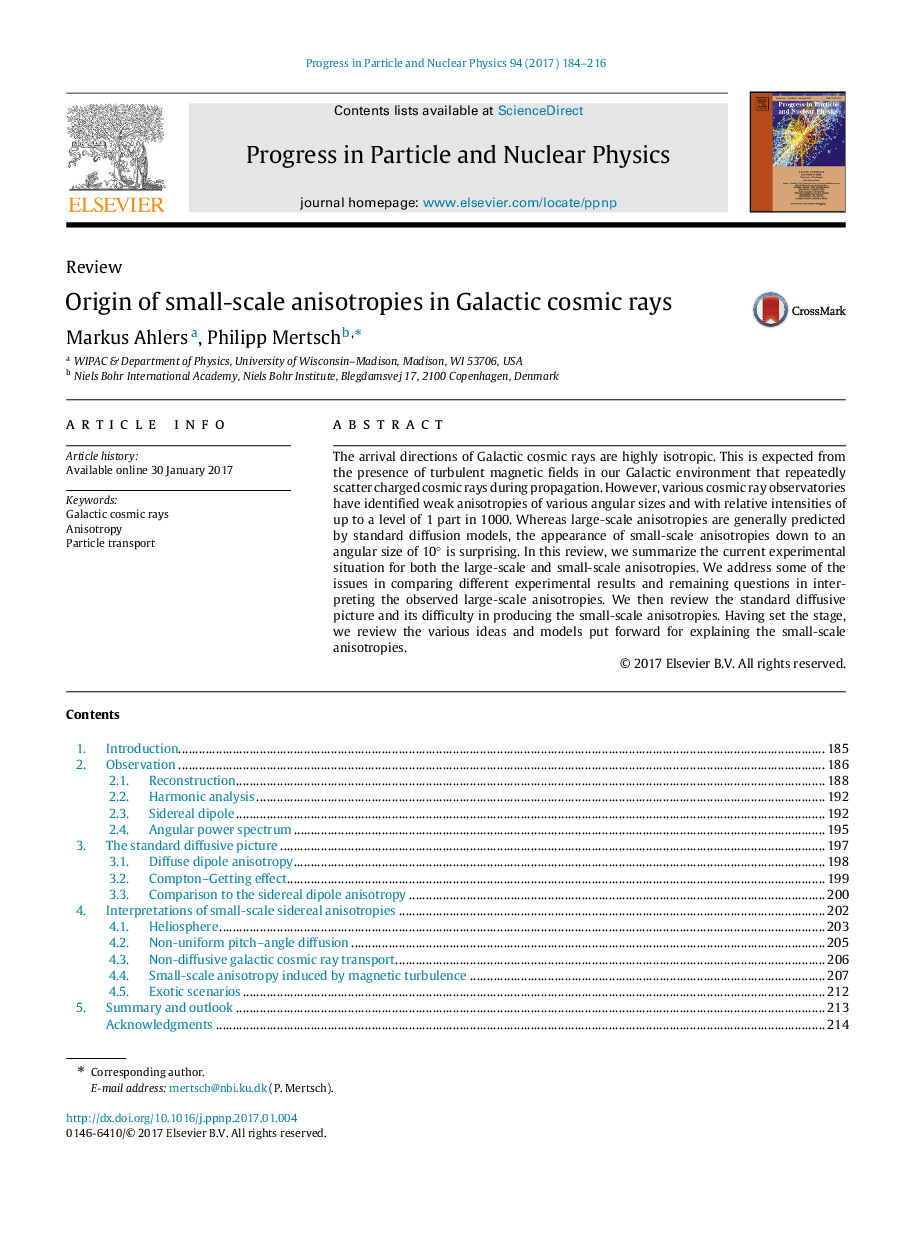| Article ID | Journal | Published Year | Pages | File Type |
|---|---|---|---|---|
| 5495584 | Progress in Particle and Nuclear Physics | 2017 | 33 Pages |
Abstract
The arrival directions of Galactic cosmic rays are highly isotropic. This is expected from the presence of turbulent magnetic fields in our Galactic environment that repeatedly scatter charged cosmic rays during propagation. However, various cosmic ray observatories have identified weak anisotropies of various angular sizes and with relative intensities of up to a level of 1 part in 1000. Whereas large-scale anisotropies are generally predicted by standard diffusion models, the appearance of small-scale anisotropies down to an angular size of 10° is surprising. In this review, we summarize the current experimental situation for both the large-scale and small-scale anisotropies. We address some of the issues in comparing different experimental results and remaining questions in interpreting the observed large-scale anisotropies. We then review the standard diffusive picture and its difficulty in producing the small-scale anisotropies. Having set the stage, we review the various ideas and models put forward for explaining the small-scale anisotropies.
Related Topics
Physical Sciences and Engineering
Physics and Astronomy
Nuclear and High Energy Physics
Authors
Markus Ahlers, Philipp Mertsch,
